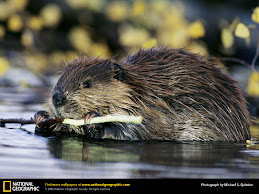 An extraordinary book crossed my desk the other day, arriving at a critically important moment.
An extraordinary book crossed my desk the other day, arriving at a critically important moment. The Last Polar Bear from Braided River Books is described as a “photographic journey” by photographer Steven Kazlowski. It’s a coffee table book overflowing with photos of polar bears (not to mention seals, whales, walruses, Eskimos, and more), sharing the bear’s incredible natural history while cementing its place in the annals of environmental concern. Like eagles and peregrines were the 1960s symbol of DDT’s impact, the polar bear has become a reluctant poster child for global warming.
But the terrain the book covers is expansive, as Bear includes a series of elegiac essays from notable writers like Theodore Roosevelt IV, Newsweek correspondent Dan Glick, and several Alaskan environmental writers. These essays dive into politics, climate change, natural history, Inupiat Eskimo culture, and a whole lot more.
The book opens with a preface by Helen Cherullo, executive director of Braided River Books, the nonprofit publishing house that released Bear, who took Kazlowski to Congress in 2007 to share his photos. His presentation ended with a photo of a polar bear in a zoo, with him noting that “within decades, this could be the only place on earth a polar bear will be found.”
So the book’s title is a preemptive shot across the bow of American culture. But remember, the Interior Department finally bowed to pressure (and court orders) and listed the bears as a threatened species, threatened because the ice upon which they depend is thawing underneath them—far faster than scientists imagined possible. A study by the U.S. Geological Survey, released last fall, predicts that two-thirds of the world’s polar bears, including Alaska’s entire population, may disappear completely by 2050.
The last two years saw record ice melt in Arctic Ocean summers, and many scientists are now predicting ice-free summers in coming decades. Polar bears, of course, use this ice to move about, find mates and hunt for seals. As temperatures warm, the loss of the pack ice directly impacts their ability to survive.
Right now, as the long Arctic winter winds down, mother polar bears are nursing their young in ice-bound dens while hibernating. In March or April, the mother and pups emerge from their dens to start the new spring season.
What kind of world will the polar bears emerge into this year? That’s partly up to you. Grab this book.
The Last Polar Bear: Facing the Truth of a Warming World. Braided River Books, February 28, 2008 235 color photos, 192 pages, 10”x12”, Hardcover. Photos courtesy of Braided River Books and Steven Kazlowski.



No comments:
Post a Comment